

Global Goals Jam 5th anniversary symposium - Full Registration video. Mapping towards a Good City Life - Centre for Urban Design and Mental Health. Mapping towards a Good City Life Daniele Quercia (1), Luca Maria Aiello (1), Rossano Schifanella (2)(1) Bell Labs, UK(2) University of Turin, Italy What makes for a good city street?
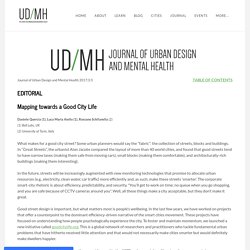
Some urban planners would say the “fabric”: the collection of streets, blocks and buildings. In “Great Streets”, the urbanist Alan Jacobs compared the layout of more than 40 world cities, and found that good streets tend to have narrow lanes (making them safe from moving cars), small blocks (making them comfortable), and architecturally-rich buildings (making them interesting).In the future, streets will be increasingly augmented with new monitoring technologies that promise to allocate urban resources (e.g., electricity, clean water, car traffic) more efficiently and, as such, make these streets ‘smarter’.
The corporate smart-city rhetoric is about efficiency, predictability, and security. Figure 1: Correlation between recognizability and deprivation for London Boroughs. Figure 2. Figure 4. Figure 5. 10 Creativity Challenges to Exercise Your Creative Confidence — James Le. I recently read “Creative Confidence” by Tom Kelley & David Kelley.
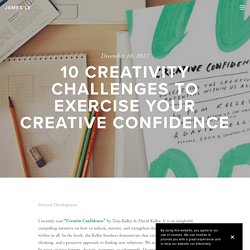
It is an insightful, compelling narrative on how to unlock, nurture, and strengthen the innate creativity that lies within us all. In the book, the Kelley brothers demonstrate that creativity is a mindset, a way of thinking, and a proactive approach to finding new solutions. We may not all be artists, but we can be more creative lawyers, doctors, managers, or salespeople. Drawing on stories from their work at IDEO and the Stanford d.school, the Kelleys show us how to tap into the wellspring of creativity and imagination when tackling the problems we encounter. Moreover, they reveal specific strategies to unleash that creative spark within us. According to Julie Zhuo: A person with creative confidence understands how to strike the balance between certainty and uncertainty.
Participatory design. FRAMING PARTICIPATORY DESIGN RESEARCH Understand. Use Design Thinking to Integrate Sustainable Development Goals (SDGs)… Design Thinking Process with the UN Sustainable Development Goals. School tends to be about teaching to the test and addressing each standard more than finding real-world authentic learning experiences.
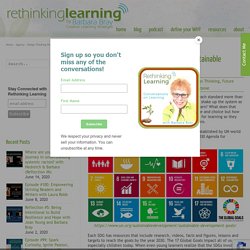
How do we shake up the system so kids address what they need to know and what they want to learn? What does that mean for “school” now? We talk about the importance of voice and choice but how do we encourage learners of all ages to discover their purpose for learning so they own and drive it. Learners need relevant, authentic applications. On January 1st, 2016, the 17 Sustainable Development Goals established by UN world leaders were adopted in an international effort to meet the 2030 Agenda for Sustainable Development. DESIGN THINKING FOR SDGs. What do the Sustainable Development Goals have to do with business or design thinking?

For businesses that care about people and the planet, plenty! By Krista Aspiras. The Sustainable Development Goals (SDGs) were established by the United Nations to end poverty, protect the planet, and ensure prosperity for all. The 17 goals, adopted by 193 participating UN countries, lay out the global agenda for sustainable development until 2030. Design thinking is a process used to build innovative solutions for product, service, and business design problems ranging from simple to complex.
With the 17 SDGs taking on arguably the world’s toughest problems that exist today, it seems both competitively advantageous and incredibly valuable for businesses to advance the SDGs using design thinking. Research trough design and transdisciplinarity. Rudy Gaskins and Joan Baker: Black cartoons with white voices: Hollywood's other blackface problem. For many decades, Black Americas have sat their children down in front of the TV to enjoy what we thought were wholesome, entertaining cartoons, with practical moral lessons and cautionary tales.
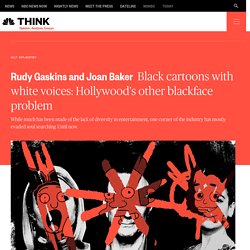
Of course, we didn’t see authentic portrayals of ourselves, but we didn’t see our true selves reflected in much of anything else, either. Design Defined: Anthropomorphic Form in Product Design. (This post is based on the video, “Anthropomorphic Form,” in the Design Defined: Design Principles Explained series.)
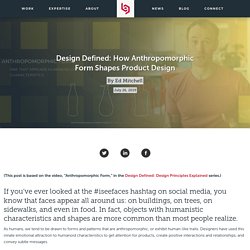
If you’ve ever looked at the #iseefaces hashtag on social media, you know that faces appear all around us: on buildings, on trees, on sidewalks, and even in food. In fact, objects with humanistic characteristics and shapes are more common than most people realize. As humans, we tend to be drawn to forms and patterns that are anthropomorphic, or exhibit human-like traits. Designers have used this innate emotional attraction to humanoid characteristics to get attention for products, create positive interactions and relationships, and convey subtle messages. One of the most famous examples of anthropomorphic form in design is the Coca-Cola “contour” or “Mae West” bottle.
When Coca-Cola’s “Mae West” bottle debuted in 1915, it was a breakthrough design — and today, it’s iconic. Designers use masculine forms, too. 15710882.2011. As the focus of product design has shifted from exclusively commercial to sustainability and social concerns, design education in this area has endeavoured to keep pace.
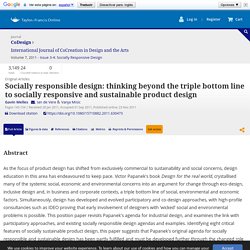
Foundations in Design Thinking Certificate – IDEO U.